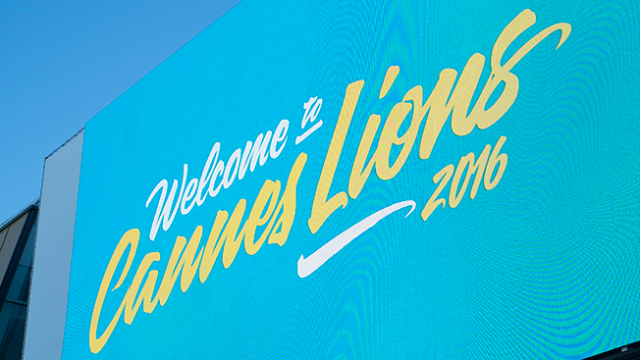The Cannes Lions were held last week, drawing much of the global advertising industry (as well as ourselves) to the French Riviera. While Brexit loomed over the end of the event, other resonant themes of interest among the practitioners we interacted with on the current state of the industry’s affairs include the following:

- Google-Facebook hegemony. Seemingly every conversation involved some reference to the current or future dominance of Google and Facebook, and the need to work with or find ways around these two media owners. Conversely, we became more appreciative of the idea that over extended time horizons as budgets become more fluid between digital and non-digital media (especially television), Google and Facebook will likely be less dominant among the combined groupof media owners
- The rise of Snapchat. Snapchat’s physical presence was essentially everywhere, ranging from the security check-ins at airports in New York to the largest signage in front of the Palais, where most formal Lions events were held. That physical presence undoubtedly catalyzed many comments and conversations related to very favorable expectations for Snapchat’s prospects as a media owner.
- The durability of Twitter. Twitter retained its own significant presence at the event, as press reports highlighted Twitter’s success in selling sponsorships associated with the company’s NFL streams. As we have previously written, Twitter has been uniquely capable in making its ad products ones which senior marketers, such as those which were concentrated in Cannes, pay attention to.
- The curiosity of Viacom. With ongoing court-room drama and widespread expectations among investors and press alike that the current management team will soon depart the company, there was much discussion among industry practitioners around CEO Philippe Dauman’s presence in Cannes in support of Viacom’s events.
- Agency holding company fee transparency and agency-marketer relations. Likely a proverbial “elephant in the room” at many meetings between agencies and their clients, the aftershocks of the recent K2 report are still being felt. We continue to believe that agency-marketer relations are generally worse than they were before that report was released, and agency reaction to it (essentially ignoring the thrust of the complaint) is worsening matters further. While we think that worse could yet come – significant numbers of media agency reviews may now occur which fully account for the content of the K2 report, and all holding company agencies are likely to be impacted to some degree by the current tone of relationships – we also believe that the conversations produced by reaction to the report provide an opportunity for agencies and marketers to address many of the report’s issues one by one. Franker talk about the pros and cons of supporting agencies’ efforts to generate revenues from non-transparent activities may also allow agencies to expand those business practices to their clients ultimate benefit.
- Looking for solutions to the problems of digital advertising. Ad quality issues (related to bots, fraud, viewability, content adjacencies and other topics) certainly came up a lot as well. While there has been discussion about whether or not awareness of these issues has caused budget shifts away from digital media and towards television instead, we think that marketers are generally more interested in investing against solutions to the tactical problems at hand. One of the more interesting approaches that we think will gather steam relates to time-based selling of digital advertising, which The Economist and Financial Times have certainly encouraged; one emerging ad tech company called Parsec was present at the event to highlight its efforts as an ad network selling media on this basis.
- Programmatic everything. Many vendors and consultants were present at the event helping media owners, marketers, agencies and other technology providers to capitalize on the potential of programmatic advertising – i.e. more data and more automation of processes, which in turn facilitate different approaches to strategizing about, planning, trading and executing on media. We see this as part of a growing and ongoing trend rather than a short-term area of focus for the industry, across all media types.
- The state of ad tech. Despite the growth of programmatic advertising and the ad tech that supports it, many were once again surprised (or dismayed?) by the number of yachts and yacht parties hosted by otherwise little-known companies in ad tech. We note that while some of those companies may be making a last push for viability with promotional activities such as these, most companies likely chose to use yachts rather than hotel suites for their client meetings, which can be equally costly.
- Video everywhere. Many of the ad tech companies present in Cannes were focused on video, which is illustrative of the ongoing shift of digital budget allocations from display to rich media to video.
- VR’s emergence. Virtual reality demonstrations had a significant presence at the event. While meaningful advertising efforts are likely a ways off, this is clearly an area of focus for many in the industry.
- Technology vs. product and sales differentiation; data as a source of differentiation in ad sales and ad buying. Many of the companies we met with are competing on different bases. In ad tech we note that there are ad networks who are growing by focusing on their unique technologies and data sources, while others are focusing on product innovation. At the same time we note many companies are focusing on providing only a data layer to support other companies’ ad sales efforts, essentially white labelling data in the process.
Source: Pivotal Research Group





